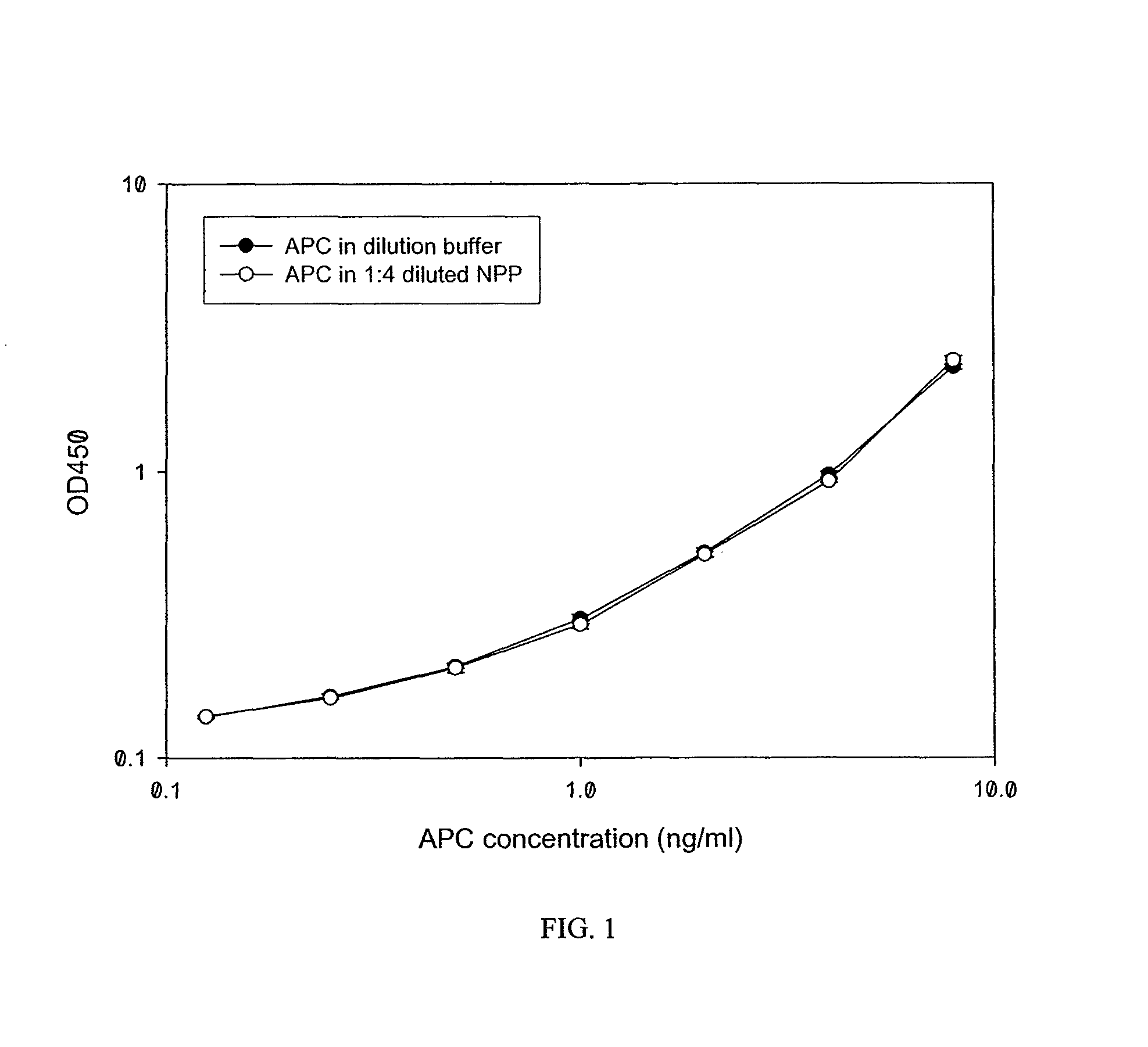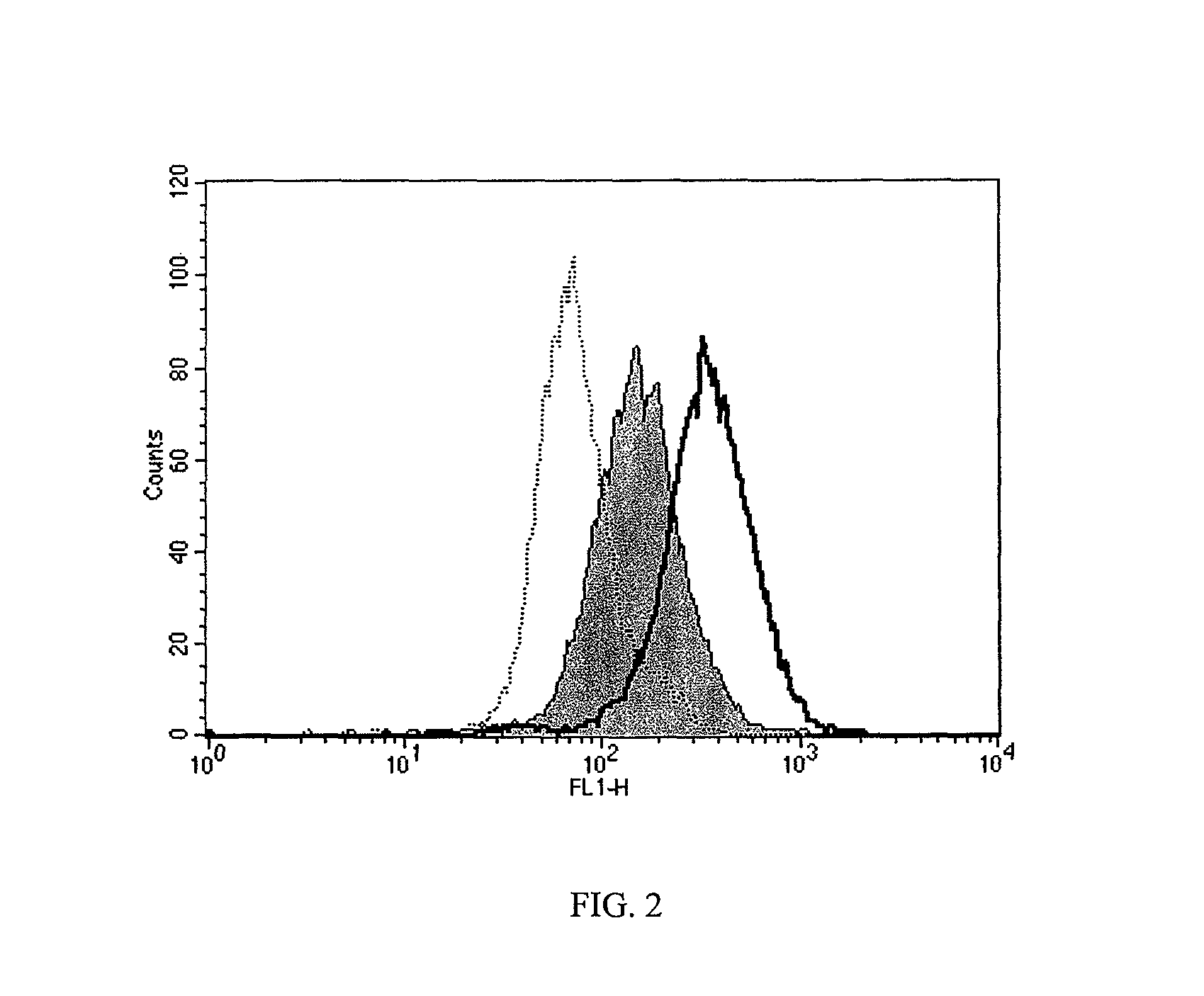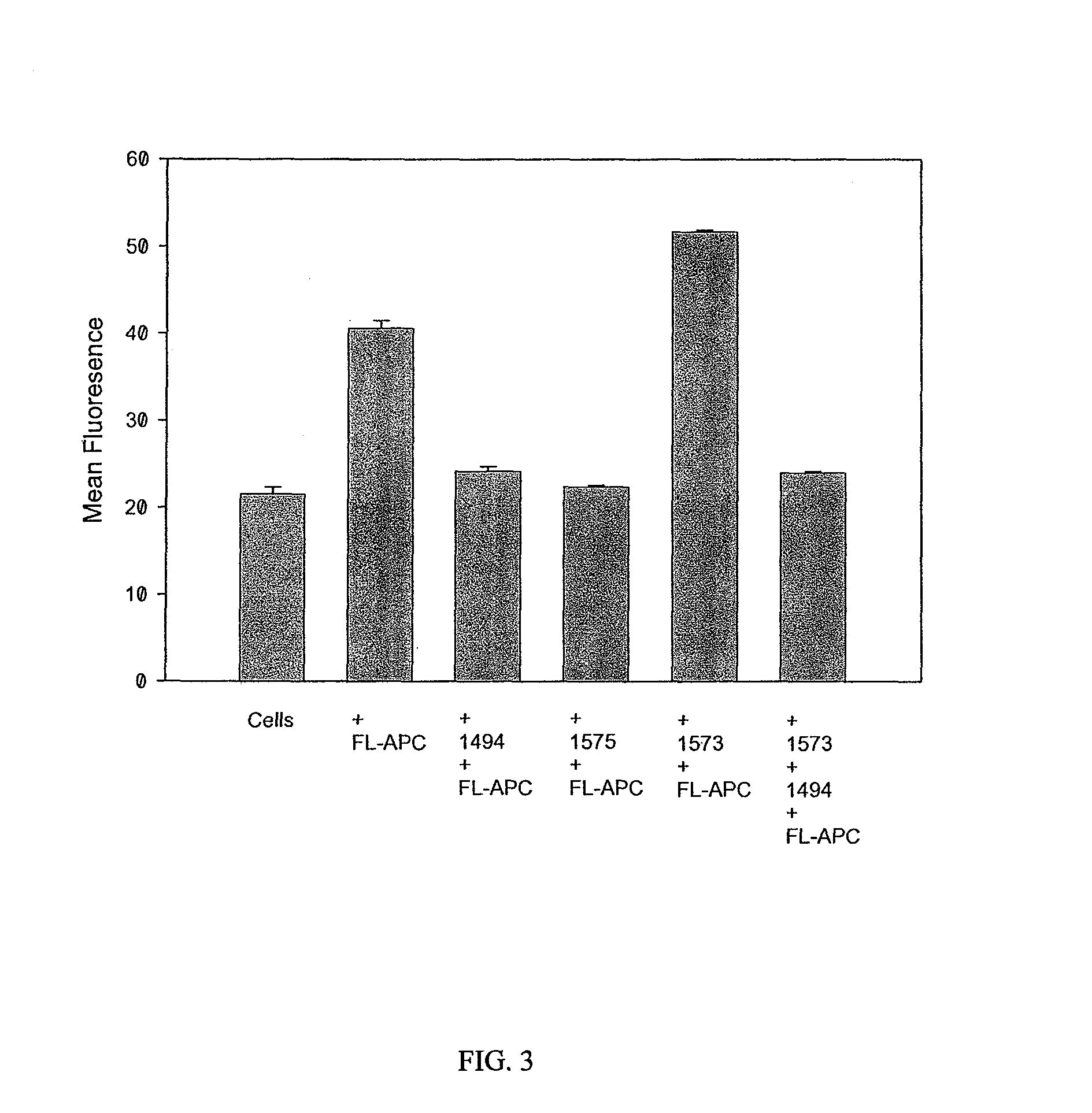Monoclonal antibodies against activated protein C
a technology of activated protein and monoclonal antibodies, applied in the field of antibodies, can solve the problems of unwanted detrimental consequences, the ability to directly determine the functioning etc., and achieve the effect of inhibiting the anticoagulant activity of the activated protein
- Summary
- Abstract
- Description
- Claims
- Application Information
AI Technical Summary
Benefits of technology
Problems solved by technology
Method used
Image
Examples
example 1
Methods for Screening, Identification and Use of a Human MAb of the Present Invention
[0101]Materials. Human protein C, bovine thrombin were prepared as described previously (Esmon et al., 1993; incorporated herein by reference in its entirety). Recombinant APC (Xigris) was from Eli Lilly. Spectroxyme PCa was from American Diagnostica. 1-Palmitoyl-2-oleoyl-phosphatidylcholine (PC), 1-palmitoyl-2-oleolylphosphatidylserine (PS), and 1-palmitoyl-2-oleolyl-phosphatidylethanolamine (PE) were from Avanti Polar Lipids, Inc. Human endothelial derived EA.hy926 cells were maintained in DMEM (Dulbecco's modified Eagle's medium) supplemented with 10% fetal bovine serum, L-glutamine and HAT (hypoxanthine, aminopterin, thymidine). Fluorescein labeled APC (FL-APC) was prepared with the Fluorescein-EX Protein Labeling Kit from Molecular Probes according to the manufacturer's instructions. In these examples, “protein C,” without the “activated” modifier, refers to unactivated protein C.
[0102]Generati...
example 2
Results for Screening, Identification and Use of a Human MAb of the Present Invention
[0109]HAPC1573 enhances APC binding on endothelium. To test whether HAPC1575 would have any influence on APC binding on endothelium, the inventors incubated EA.hy926 cells with FL-APC in the absence or presence of HAPC1573 or HPC1575 and measured the binding of FL-APC on cells by flow cytometry. The histograph of flow cytometry showed that HAPC1573 enhanced FL-APC binding on the endothelial cells, while HPC1575 inhibited the binding of FL-APC on the cells (FIG. 2). HAPC1573 facilitates APC internalization on endothelium FL-APC could be internalized into EA.hy926 cells through the interaction of Gla domain of APC and EPCR on the cells, and this internalization could be blocked by either EPCR blocking Ab (JRK1494) or Gla domain blocking Ab (HPC1575) (FIG. 3). HAPC1573 could facilitated FL-APC internalization into the cells, and this effect could be completely blocked by EPCR blocking Ab (FIG. 3).
[0110...
example 3
Discussion for Screening, Identification and Use of a Human MAb of the Present Invention
[0114]Protein C is activated by thrombin complexed with thrombomodulin on endothelium. Unlike the few-second transient life of active thrombin in vivo, human APC has about a 20 minute half-life in circulation after its generation (Berg, et al., 2003). Therefore, one may feasibly measure a level of APC in plasma to study its regulation under various pathophysical conditions.
[0115]The currently available methods to measure APC are based on an enzyme capture assay, which uses an antibody capturing APC and then measures APC activity by chromogenic substrates. Since all antibodies used in these assays recognized not only APC but also its zymogen, protein C, and since protein C concentration is about 1000 times more than APC in normal circulation, APC measurement using these methods is not clinically relevant. A rapid and robust method for APC measurement is desirable in both diagnosis and treatment. T...
PUM
| Property | Measurement | Unit |
|---|---|---|
| time | aaaaa | aaaaa |
| diameters | aaaaa | aaaaa |
| pH | aaaaa | aaaaa |
Abstract
Description
Claims
Application Information
 Login to View More
Login to View More - R&D
- Intellectual Property
- Life Sciences
- Materials
- Tech Scout
- Unparalleled Data Quality
- Higher Quality Content
- 60% Fewer Hallucinations
Browse by: Latest US Patents, China's latest patents, Technical Efficacy Thesaurus, Application Domain, Technology Topic, Popular Technical Reports.
© 2025 PatSnap. All rights reserved.Legal|Privacy policy|Modern Slavery Act Transparency Statement|Sitemap|About US| Contact US: help@patsnap.com



